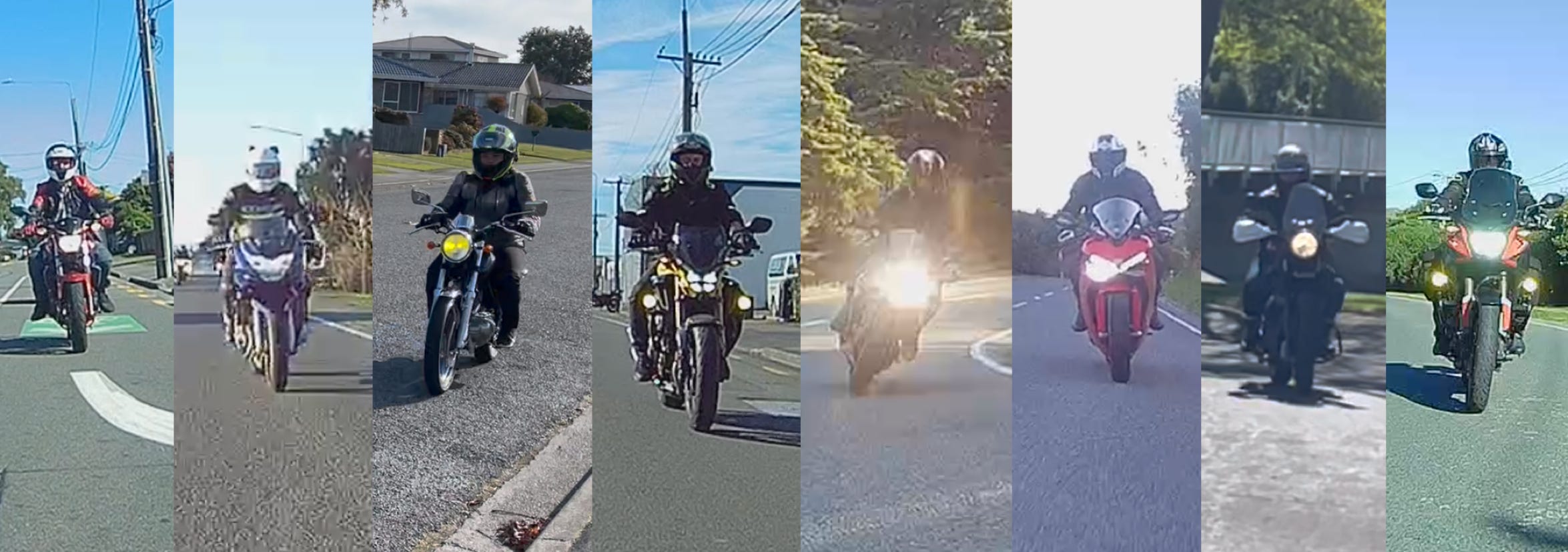I’ve ridden on two wheels for years on a bicycle, so what’s the difference between a bicycle and a motorcycle?
That is a simple question that highlights some major differences!
Two major pointers…
a) When bicycles freewheel ie not being peddled under power - this is only for bicycles, do not ride motorcycles in this way!
b) Do not cover the motorcycle handlebar levers with your fingers when you are not using them, if you do not remove idle fingers you will find it much harder to learn effective control of a motorcycle.
Your brain has to re-align hand movements and this is the simplest way to prevent mistakes, the left lever is not a brake lever but the clutch lever and treating it like a brake lever due to bicycle habits will cause accidents for learner riders.
Take idle fingers of the handlebar levers when riding a motorcycle.
1. Motorcycle steering requires more input
When you ride a bicycle, steering feels light and more direct.
Bicycles still have a counter-steering effect but the human body weight is the larger weight mass and thus using body weight while leaning into corners is a very effective method to get the bicycle onto the tyre’s sidewall to complete a corner.
However, when you steer a motorcycle as it is heavier than the rider (generally speaking!) plus the added gyroscopic effects of the moving wheels and engine component inertia you need more steering input to corner and so counter-steering goes from a hardly felt “mystery” effect on a bicycle into a major part of the managing the vehicle’s handling when using a motorcycle.
2. Motorcycles have torque
When a bicycle rider stops peddling, you are essentially free wheeling. You can be resting, slowing down or going down a hill and gravity does all the work for you (it gives and it taketh away if peddling up hill!)
Motorcycles and their engines constantly push the rider, it’s a never ending tail wind.
But due to the weight of a motorcycle, torque and the forward motive power is what actually keeps the stability of the motorcycle when travelling. Just a fact of life due to the vehicle mass.
You cannot just cruise free wheeling around corners and other situations on a motorcycle, the engine torque and throttle control is part of steering control and the stability in corners, even downhills (and uphills).
3. Motorcycles have a clutch
When a bicycle rider stops peddling, the power delivery is in effect “neutral” and free wheels.
When a motorcycle is used, neutral is only used when at complete stops or changing gears by using the cutch lever.
The clutch is the single most important thing about motorcycles above speed, corners, etc… If you fail to understand the clutch’s role and when it should be used then you are creating more risk to yourself and other vehicles.
Disengaging the engine power (in neutral) to the rear wheel when moving through corners and other general use cases actually destabilises the motorcycle handling as it is no longer under motive power.
5. Rider vision
A bicycle rider only needs to look as far ahead as the time it takes to complete a section of road at a specific speed, this may take a longer time at 30Kph than at 100Kph so cyclists tend to look at the road right in front of them just ahead of their front wheel instead of the vanishing point down the road ahead as they are the engine, peddling away and resting upper body on the handle bars!
A motorcycle operates over a various range of speeds like a car does and if the cyclist’s habit of looking down at the road in front of a motorcycle’s front wheel was used, you would not have time to plan any road positioning and potentially cause a accident.
4. Vehicle positioning
Many bicycle riders are used to riding on the road shoulders or sides and while cyclists may have better than car driver awareness about their own surroundings for survival purposes, it’s no place for a motorcycle.
The motorcycle rides on the road lane with other vehicles, obviously motorcycles are just as fast as cars and an interesting aspect of this road position is it does lesson rate of punctures and road debris found by motorcycle riders.
Riders obtain a licence to be using a road registered vehicle and all the responsibilities that come with it.
Some would say high powered e-bikes and scooters should not be on the road shoulder or side due to the speeds matching traffic in the lane next to them… That would imply they should get road registration and insurance to operate those vehicles at those speeds to use the roads like other road registered vehicles and incur the responsibility for operating those vehicles correctly.
(Going the same speed as a car while using a bicycle lane or road shoulder is a risk to yourself, and shows a lack of responsibility or awareness for other road users!)
6. Rider position
A bicycle rider while peddling away tends to be resting the upper body on the handle bars!
A motorcycle rider should have no weight resting on their wrists on while holding the handlebar, motorcyclists use their legs to grip the petrol tank or body work of the motorcycle and the upper body is then free to control the motorcycle and improve vision. Specifically for the road ahead and its vanishing point.




